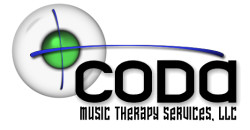 |
| Congresswoman Gabby Giffords received a standing ovation at her first appearance in the House of Representatives since her attempted assassination (Aug 1, 2011). |
There is already quite a buzz throughout my social media streams regarding last night’s Gabby Giffords special on ABC News. I’d like to share my reflections on last night’s special and why this news is so important for the music therapy discipline.
As most of you are aware, Gabrielle Giffords, a Congresswoman from Arizona, was shot in the head during an assassination attempt last January. The bullet went through the left hemisphere of her brain, which is the side that controls our language processes and the motor functions for the right side of the body. Gabby Giffords went through extensive rehabilitative treatment at TIRR Memorial Hermann in Houston, TX. As part of her treatment, she received and responded well to music therapy. Due to her stature, her treatment has been followed closely by the media, including a feature by CNN’s Dr. Sanjay Gupta, who spent time experiencing the various treatment disciplines. Of his interactions with TIRR music therapist, Maegan Morrow, he noted, “I realized through music, she was working on developing my attention, memory and overall executive function.” Yes! Exactly!
Having already had such wonderful media attention for Giffords’ music therapy treatment, I was anxious to see what information the ABC News special would provide. I am incredibly thankful to Gabby Giffords and her husband, Mark Kelly, for allowing ABC News to air their home video footage of her treatment. They not only provided insight into the rehabilitation necessary following a traumatic brain injury (TBI), but they also showed the human element of the story, as you can see her frustrations with not being able to say what she knows and also her joy and determination for triumph. It is also easy to see the incredible love and connection between Giffords & Kelly.
I was a bit disappointed that, during the 20/20 special, there was not a more in-depth explanation of music therapy and its use for treatment of TBIs. During the special, they aired footage of music therapist, Maegan Morrow, working with Giffords, but they referred to her as a “therapist with the guitar” rather than explaining her credentials. I was happy to discover that the follow-up Nightline did provide more information about the science of music therapy, including commentary by legendary neurologist Dr. Oliver Sacks. That footage can be seen in the clip Giffords Rebuilds Speech with Song. I love Maegan Morrow’s explanation of how music accesses multiple areas of the brain and music can be used like a highway “exit” to go around the blockage and get to where you need to go. Another clip, including some unaired footage, can be seen online at Gabby Giffords: Finding Words Through Song.
One noteworthy feature to point out about many of these clips is that you can see Giffords struggling for one, two-word responses, yet she is able to sing entire phrases. This is a common occurence for individuals with aphasia; the musical context finds the pathways that the words alone can not. Music can be used to teach the brain to use those alternate pathways to rebuild communication.
Gabby Giffords was only one of the victims of a horrible tragedy. Though we would all rather this had not happened, I am pleased that the media is using this opportunity to focus and educate regarding TBI and the extensive and ongoing rehabilitation needed to survive and overcome these injuries. I wish Gabby Giffords and many others struggling with a TBI continued success in their therapies and recovery. I am also THRILLED to be a music therapist, using music to help others heal and develop each and every day.
Did you catch the special? What were your thoughts?

